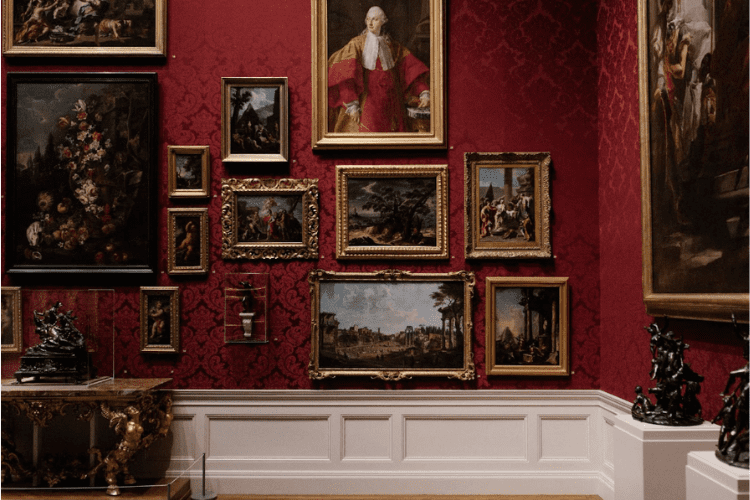Is Artwork A Good Investment In 2022?

In the traditional investment realm, you have stocks and bonds.
This is the typical makeup of the average retail investor portfolio today. Some may have real estate, crypto, or other alternatives, but these are still not as commonplace.
You might think that it’s because alternatives are a bad investment. While the verdict is still out on newer asset classes like cryptocurrency, many time-tested assets within this group should be considered.
One of these assets is artwork!
The main reason artwork is uncommon in investor portfolios is accessibility. In the past, the only way to invest in artwork was to buy a piece yourself outright. This could require an upfront capital investment of $100,000+, something most people do not have. Not to mention, simply owning one painting does not give you any diversification.
Today, Masterworks allow investors to purchase shares of fine art. The minimum investment is $500, and most shares start with a value of $20. So, your $500 investment could be diversified across multiple pieces of artwork – art investment can yield significant returns!
Today, artwork is far more accessible as an investment. But does that mean you should invest? Let’s dive into artwork as an investment to see if buying art is smart for your portfolio.
Artwork Investment Returns
When determining whether or not something is a good investment, most investors will start by looking at the returns generated. While this shouldn’t be your first or only criterion, let’s cover this first.
According to Masterworks, artwork has actually performed better than other asset classes in recent years. In fact, from 1995 to the present, contemporary art has averaged 13% appreciation each year. During the same period, the S&P 500 has averaged 10.2%, real estate has averaged 8.9%, and gold has averaged just 7.2%.
Does that mean artwork is a good investment? The answer is complicated.
Before you go out and toss your life savings into artwork, it’s important to understand two things:
- The way artwork makes money for investors is very different from stocks, real estate, etc.
- It’s extremely complicated to value artwork because it’s “subjective” (more on this later).
How Does Art Investing Make You Money?
So let’s start with how investors generate returns from artwork. The first big thing to understand is that artwork is a non-yield-bearing asset. This is a fancy way of saying it doesn’t generate income for investors while they own it.
Dividend stocks, for example, pay you quarterly in most cases for the duration you own the stock (or for the time the company continues paying dividends). Rental properties can put cash in your pocket monthly from positive cash flow, for example.
The only way to make money with artwork is to buy a piece today, assuming it will be worth more to someone else in the future. Art is worth what people are willing to pay for it at the time. In that sense, it’s somewhat similar to real estate since that appreciates, too. However, real estate is valued based on tangible factors like square footage, location, and schools.
Valuing artwork is entirely different. That’s because it’s based on subjective factors or the educated opinions of influential collectors and artwork professionals.
How Is Artwork Valued?
If you want to value a stock, you look at the revenues generated and how much of that is translating into profits. Then, you consider how these figures are growing over time. For a rental property, you’d likely find a “comp” or comparable listing that sold recently in the area.
If you want to value a piece of artwork, here are just some of the factors you need to consider:
- Visual Appeal – First, good artwork captures your attention and draws you in. Keep in mind the visual appeal has a lot to do with the period in which the work was created.
- Artist – Most artwork investors do well by purchasing a piece of work from an artist that becomes more famous over time. So, consider the reputation and future prospects of the artist.
- Condition – Just like rare coins and other collectibles, the condition is critical. This is something that’s determined during a formal appraisal.
- Subject – What is the painting of? Certain subjects are more popular than others. For example, the nude female motif has stood the test of time.
- Complexity – People have a greater appreciation for something that’s difficult to do. Consider how long it took the artist to create the piece!
Keep in mind these are just a few factors that will influence the current and future price of a piece of artwork. In addition, since there’s only one way to make money with art (selling it for more money later), you are locked into that strategy.
The Bottom Line
Artwork appreciation can often take decades. This is a long-term investment, not usually something you would trade in and out of fast. Masterworks holds on to most paintings for a 3 to 10-year period on behalf of investors.
Consider the long-term nature of this investment and the subjective valuation factors before investing.
Now that you’re better informed, you may be ready to explore the asset class of farmland, too. And if you still want to learn more, check out my blog, Artwork Investor, which is all about artwork investing!










